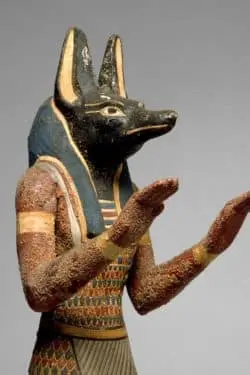The concept of death has fascinated humanity since ancient times, leading to the creation of various mythologies rich with gods and deities associated with the afterlife. Among these divine figures, the God of Death holds a prominent place, symbolizing the transition from life to the unknown realm beyond. This article delves into the diverse interpretations of the God of Death in different mythology, shedding light on their roles, attributes, and cultural significance.
God of Death in Different Mythology
Yeomra in Korean Mythology

The Yeomra is the God of Death in Korean mythology, tasked with guiding souls to the afterlife and overseeing the underworld. Often depicted as a judge, Yeomra determines the fate of the deceased based on their deeds in life. He ensures justice and order in the afterlife, ensuring that each soul receives its rightful place.
Yeomra’s role highlights the importance of morality and ethical conduct in Korean culture, as individuals believe their actions in life will determine their destiny in the afterlife. As a figure of authority and judgment, Yeomra serves as both a symbol of fear and a beacon of hope for those seeking redemption.
Yama in Hindu Mythology

Also known as Yamraj or Dharmaraja, Yama, serves as the God of Death in Hindu mythology. Depicted as a stern but just ruler, Yama is responsible for guiding souls to their appropriate afterlife destinations based on their karma. Yama’s realm, Naraka, consists of multiple levels of existence, each corresponding to different forms of punishment or reward.
As the ultimate arbiter of fate, Yama embodies the Hindu principles of dharma (righteousness) and karma (action), ensuring that individuals are held accountable for their actions in life. Despite his fearsome reputation, Yama is revered as a symbol of divine justice and the inevitability of death in Hindu culture.
Pluto in Roman Mythology

Known as the God of Death in Roman mythology, Pluto, holds dominion over the underworld, where souls journey after passing through the river Styx. Often depicted as a stern figure, Pluto wields a scepter and wears a cloak symbolizing his authority over the afterlife.
As ruler of the dead, he ensures order and justice in the realm of the departed. Despite his fearsome reputation, Pluto also represents the cycle of life and death, embodying the inevitability of mortality in Roman culture. His role underscores the Roman belief in an afterlife and the importance of proper burial rites to ensure safe passage to the underworld.
Shinigami in Japanese Mythology

In Japanese mythology, the Shinigami are revered as death gods responsible for escorting souls to the afterlife. Often depicted as skeletal figures or spirits clad in traditional Japanese attire, Shinigami wield scythes or other implements of death.
They are both feared and respected, symbolizing the inevitability of death and the mysteries of the afterlife in Japanese culture. Shinigami play a vital role in guiding souls to their final destinations, ensuring that they find peace in the afterlife. While their appearance may be intimidating, Shinigami are viewed as protectors of the natural order, maintaining balance between the worlds of the living and the dead.
Hades in Greek Mythology

In Greek mythology, Hades is revered as the God of Death and ruler of the underworld. He governs the realm of the dead, where souls journey after passing through the river Styx. Despite his ominous reputation, Hades is portrayed as a fair and impartial judge, ensuring that each soul receives its rightful place in the afterlife.
As the keeper of the underworld, Hades maintains order and balance in the realm of the deceased. While feared by mortals, he is respected for his adherence to justice and his role in maintaining the natural order of life and death in Greek mythology.
Mictlantecuhtli in Aztec Mythology

Ruling over Mictlan, the underworld Mictlantecuhtli is the God of Death in Aztec mythology. Often depicted as a skeletal figure adorned with owl feathers, Mictlantecuhtli presides over the souls of the deceased. The Aztecs believed that the journey to Mictlan was fraught with dangers, including rivers of blood and mountains of knives.
As the ruler of the underworld, Mictlantecuhtli holds immense power over the fate of the dead, ensuring that they find their rightful place in the afterlife. Despite his fearsome appearance, he is revered as a significant deity in Aztec culture, embodying the mysteries and inevitability of death.
Hel in Norse Mythology

In Norse mythology, Hel reigns as the God of Death, governing the realm of the same name. Hel is depicted as half living and half dead, with a gloomy and somber appearance befitting her role. She welcomes souls who died of old age or illness into her realm, while those who died in battle are taken to Valhalla or Fólkvangr.
Hel’s realm is characterized by its cold and desolate nature, where the dead exist in a perpetual state of twilight. As the ruler of the underworld, Hel maintains order and oversees the souls of the departed, ensuring they find their rightful place in the afterlife according to Norse beliefs.
Anubis in Ancient Egyptian Mythology

The God of Death in Ancient Egypt, Anubis, is often depicted with the head of a jackal. He guides souls through the afterlife and weighs their hearts against the feather of Ma’at to determine their fate in the underworld. Anubis is also associated with embalming and mummification, ensuring the preservation of the body for the journey to the afterlife.
As a key figure in Egyptian funerary rites, Anubis plays a vital role in ensuring a smooth transition for the deceased into the realm of the dead. He embodies the importance of proper burial practices and the belief in an afterlife among the ancient Egyptians.
Also Read: Anubis | Egyptian God of Death





